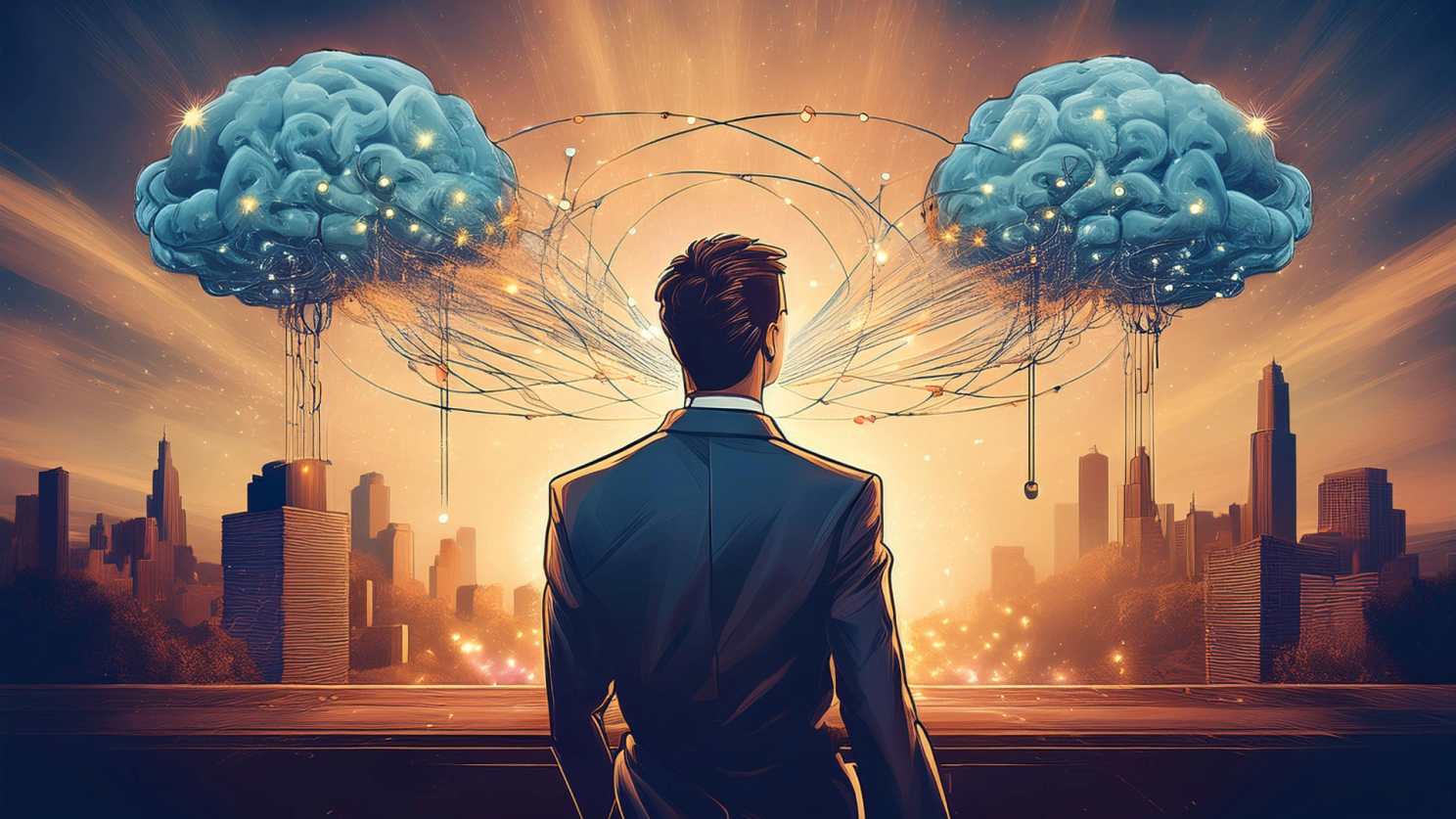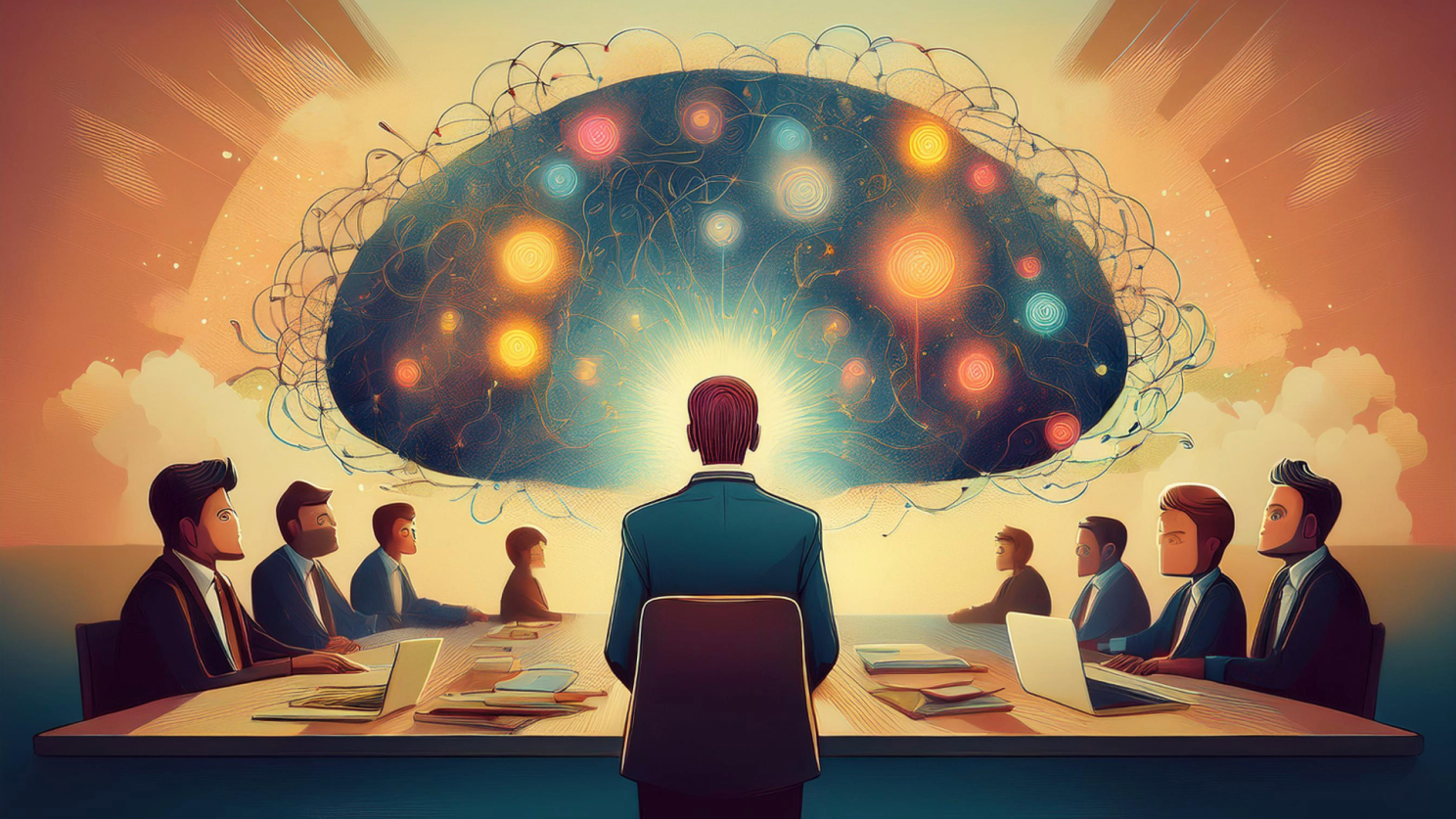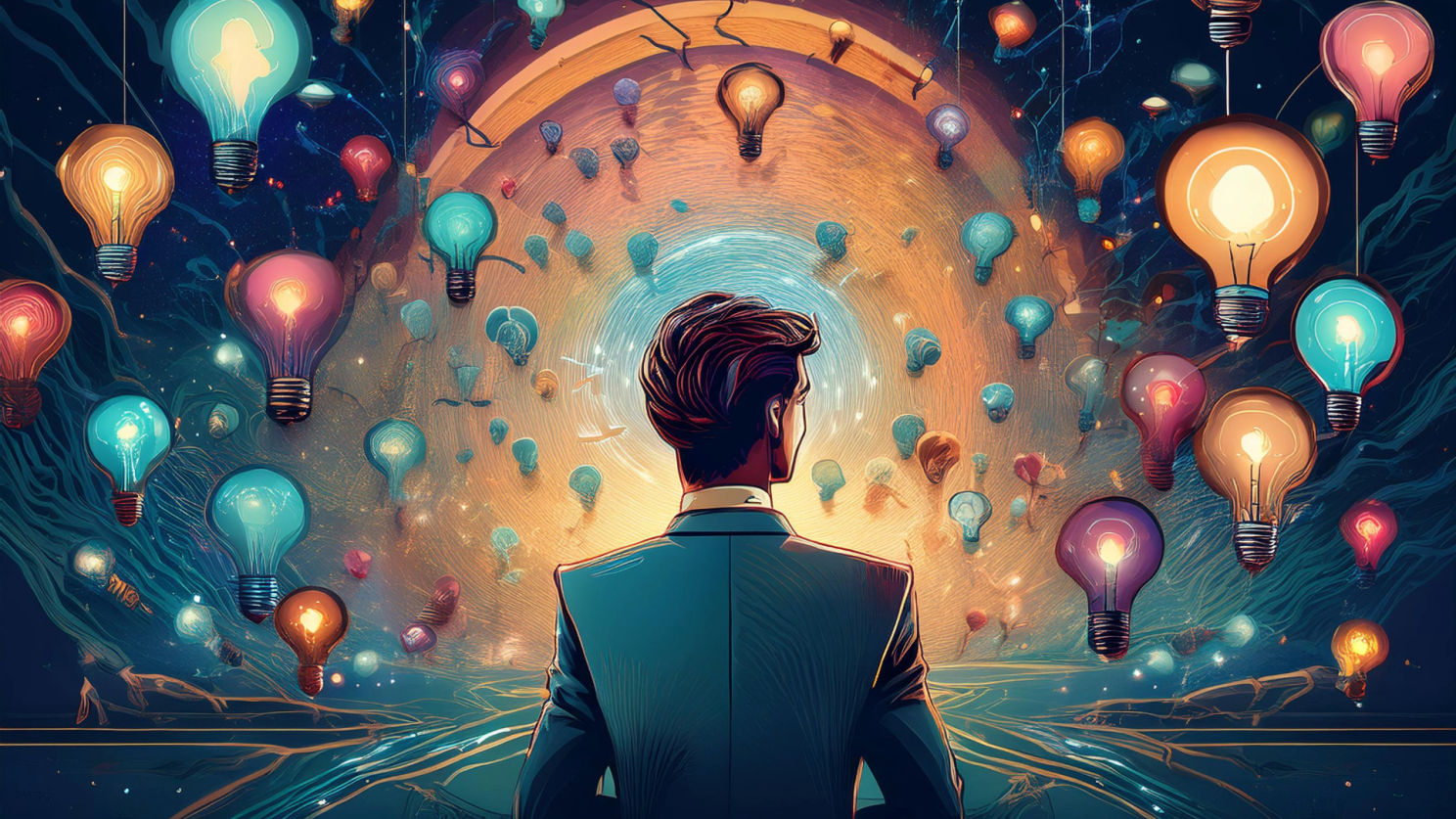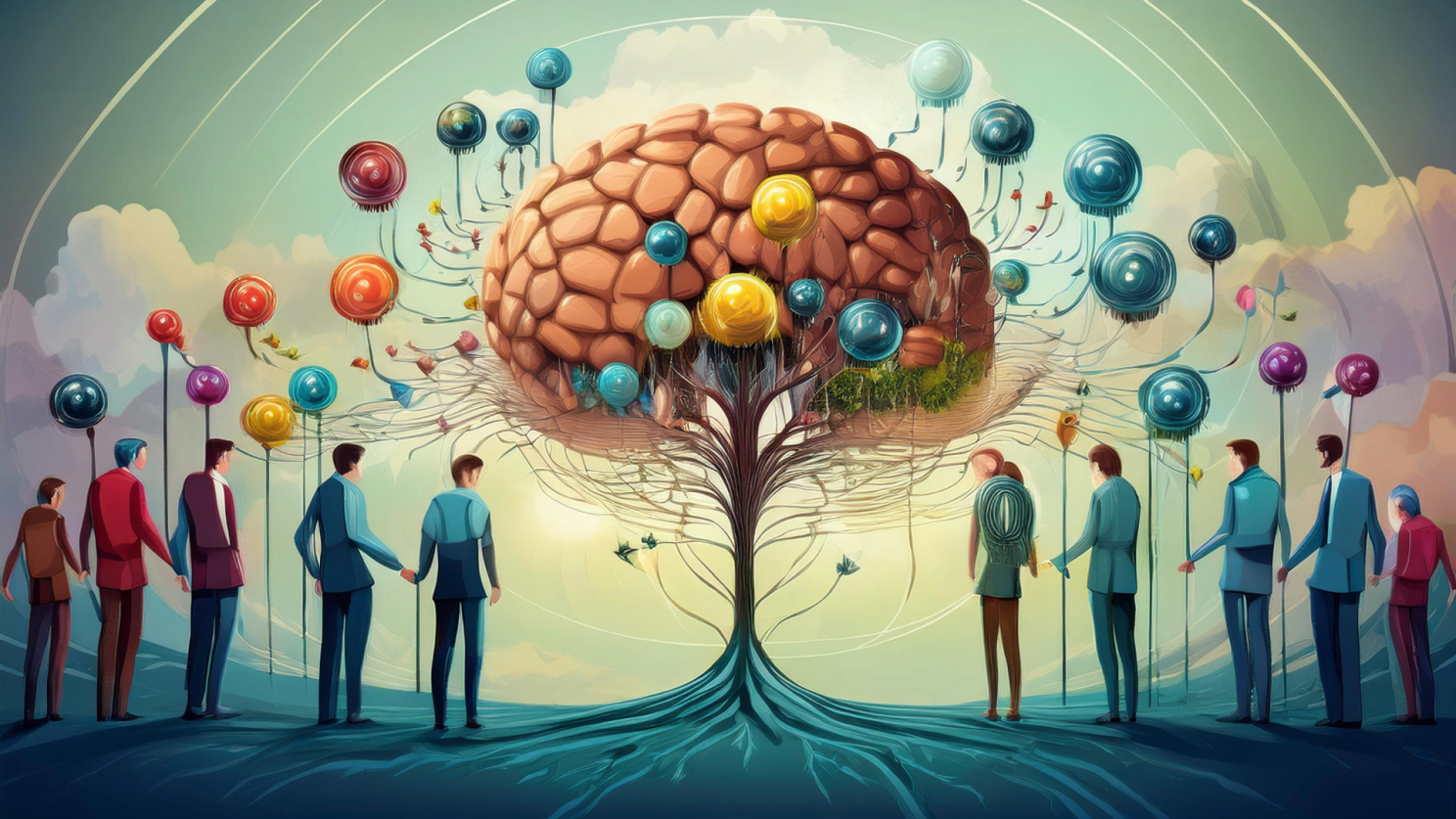Two Different Shoes Stomping Through Business Innovation
Imagine you’re at a fancy corporate gala dinner, and the DJ starts playing two songs simultaneously. One’s a classic waltz, and the other’s a funky disco number. But before you get excited for a late 2000s MashUp track by the likes of Soulwax, it’s not done well; it’s a mess, a cacophony of noise… As you try to dance, you find yourself torn between graceful 13th-century twirls and groovy John Travolta moves.
That, my hot shoe friends, is an example of cognitive dissonance in the world of DJs but, nonetheless, an almost relevant metaphor for business innovation – Often, we experience a mental tango between conflicting ideas that can either trip us up or inspire teams to invent a whole new “dance” style.

What’s Cognitive Dissonance?
Cognitive dissonance is a term coined by psychologist Leon Festinger in 1957. Festinger, a renowned social psychologist, conceptualised cognitive dissonance as a psychological state of tension that arises when an individual simultaneously holds two or more contradictory beliefs, ideas, or values or when they encounter new information that conflicts with their existing beliefs, ideas, or values. This tension often results in discomfort, motivating individuals to strive for consistency in their cognitions. This can be achieved by altering their beliefs, seeking new information that aligns with their existing beliefs, or diminishing the significance of the conflicting belief. Festinger’s cognitive dissonance theory has had a profound impact on various fields, including psychology, marketing, and decision-making.
It is the mental equivalent of wearing different styles of shoes on each foot and wondering why you are stumbling. It’s like trying to convince yourself that a kale salad tastes good while secretly dreaming of poutine (Canadian Chips and Gravy with Cheese Curd, trust us its delicious).
In business innovation, cognitive dissonance is as common as overused buzzwords in marketing meetings. It’s that nagging feeling when you’re promoting a product you’re not entirely sold on or when you’re implementing a new system that goes against everything the company has done in the past or you’ve believed in for years.

The Innovation Tango: When Dissonance Leads the Dance
Now, here’s where it gets interesting. Despite its uncomfortable nature, cognitive dissonance can be a powerful catalyst for innovation. It’s like that annoying pebble in your shoe that forces you to develop a new walking style – uncomfortable, yes, but potentially revolutionary.
Consider the case of Microsoft’s initial reluctance to respond to user feedback. Today we take Agile User Experience Design for granted. However, in the early days, there was a dissonance between Microsoft’s belief in its product and the conflicting user opinions. When you have invested time, energy and heart into developing a product, it can be frustrating that others don’t use it like you expect, or don’t see the value you hoped they would. Microsoft quickly learnt to lean into the dissonance, which led to significant product improvements and their ongoing process for future innovations.
Or take the infamous New Coke debacle. The cognitive dissonance experienced by consumers when faced with a new formula for their beloved drink led to a massive backlash. They quickly saw the folly of their ways and reverted to the tried and true formula, which cost untold budget amounts. While it wasn’t a success story for Coca-Cola, it certainly taught the business world a valuable lesson about innovation and consumer expectations. However, it didn’t stop them from innovating flavours in the future (see Lime and Vanilla Coke); it just taught them not to impact the cognitive comfort the consumer felt in the familiar brand experience. Sometimes, the dance of dissonance leads to stepping on toes, but the bruises can be educational.

The Dissonance Disco: Strategies for Busting a Move
So, how do we turn this mental discord into a harmonious innovation symphony?
Here are some strategies to consider:
- Communication Conga Line: Create open channels for dialogue. Encourage employees, users and consumers to express their conflicting thoughts and feelings, with honesty and openess.
- Mindfulness Macarena: Incorporate mindfulness techniques to help employees become more aware of their thoughts and feelings. This should be above and beyond the specific case or product; it’s about having a culture of mindfulness and awareness of Biases.
- Leadership Lambada: Leaders must model ethical behaviour and promote a culture of vulnerability and transparency. It’s like being the first on the dance floor – a bit awkward, but necessary to get everyone else moving. Don’t shy away from challenging your cognitive dissonance in the room and in front of teammates. The most confident leader who holds onto a cognitive dissonance in their mind will always diminish their team’s respect far more than one who is honest and open to feedback.
- Training Tango: Incorporate cognitive dissonance management into your training programs across all levels of the organisation. Be open as an organisation and create a culture where people feel safe to express their concerns and ideas for change and innovation. It’s like turning your office into a dance studio where new moves are always welcome.

The Experience Design Twist
When exploring experience design, cognitive dissonance can be both a friend and a foe. Event attendees or product users often need more consistency between their expectations and the actual experience; without assistance finding that consistency, it can lead to dissatisfaction. However, if managed well, this dissonance can create engaging experiences that challenge users’ preconceptions and encourage deeper interaction. Being clear on what to expect and allowing attendees/users to provide their expectations beforehand gets everyone on the same page and limits the chances of a mismatch. Even if they are wrong at first, you can pivot your solution, or adjust their expectations before delivering the event or product.
I have friends who design haunted house experiences and often speak to the benefits of embracing healthy cognitive dissonance as part of the experience. The cognitive dissonance between knowing you’re safe and feeling scared creates an engaging and memorable experience. Just ensure your business innovation doesn’t accidentally turn into a horror show!

The Organisational Change Boogie
When it comes to organisational change, cognitive dissonance is like that one friend who always suggests karaoke night – almost always initially met with resistance but potentially leading to unexpected fun and bonding. Exploring complicated topics and challenging oneself to recognise your dissonance while accepting and addressing those of the people around them is a challenge.
Employees often experience dissonance when new policies conflict with their existing beliefs. Their comfort in the status quo or their aspiration of the direction of change. This can lead to resistance and destructive conflict but can also be a catalyst for positive change if managed correctly. It’s about turning that “We’ve always done it this way” mindset into a “Let’s try a new dance move” attitude.

Shall We Dance?
Recognising and addressing the realities of Cognitive Dissonance and its relationship to business innovation is like learning a new dance with two different shoes on. It might feel awkward and uncomfortable at first, but with practice and the right attitude, it can lead to some pretty impressive moves.
Importantly, when addressed in a structured and profoundly human way, it can encourage team members to look closely at their shoes (roles) and correct opinions and behaviours that are not delivering the team’s and organisation’s needs. If someone is dancing with one foot in a sneaker and the other a 4-inch stiletto, it is probably best to understand why they don’t want to wear two sneakers instead. Then, offer them a solution that makes the dancing easier.
So, the next time you feel that mental discomfort of conflicting ideas, don’t just stand there – dance! Look at those around you, too… Are you dancing to the same DJ, or is one person listening to Bach and another bopping to Taylor Swift?
Taking the first step to see yourself and your thoughts for what they are, Ask how they might create dissonance. This step will help you see other perspectives and guide others to the most aligned way of seeing challenges and potential innovative solutions.
Embrace the dissonance, let it challenge your assumptions, and who knows? You might innovate the next big business boogie.
Silly dancing analogies aside…
What’s your experience with cognitive dissonance in your organisation?
Have you ever turned mental discord into a business breakthrough?
I’d love to hear your stories of dissonance dance-offs. After all, in the grand ballroom of business innovation, we’re all just trying to find our rhythm.
